What You Need to Know Before You Compare Saunas
Types of Saunas
When most people think of saunas, they imagine wood walls, hot benches, and clouds of steam. While this classic image is accurate for Finnish saunas, today’s wellness market includes several distinct types, each with its own method of heating and potential benefits. Knowing the differences is the first step in making a smart choice.
Finnish (Traditional) Sauna
The Finnish sauna is the oldest and most widely recognized style. Heated rocks (often with an electric or wood-burning stove) raise the air temperature to between 160–200°F. Water can be ladled over the rocks to produce bursts of steam and higher humidity. These saunas create an intense environment where sweat is stimulated primarily by hot air. While beloved for ritual and relaxation, some people with respiratory issues or heat sensitivity find the air oppressive.
Steam Rooms
Sometimes confused with Finnish saunas, steam rooms rely on high humidity (often near 100%) and lower temperatures (100–120°F). Instead of radiant heat, steam envelops the body. The experience is gentler on the skin but can feel heavy for those who struggle in humid environments. Steam also requires extensive maintenance — tiled rooms must be kept sanitized and mold-free.
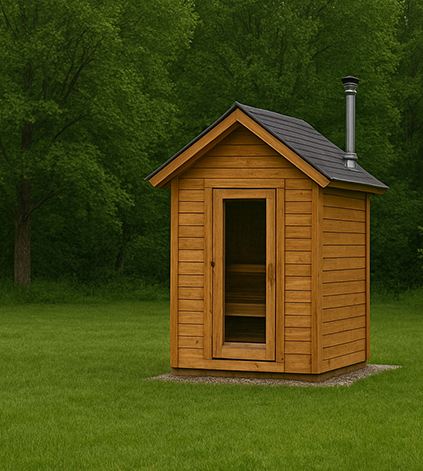
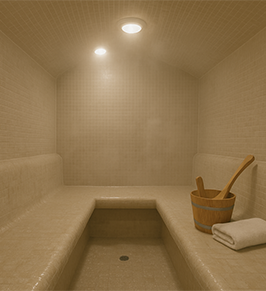
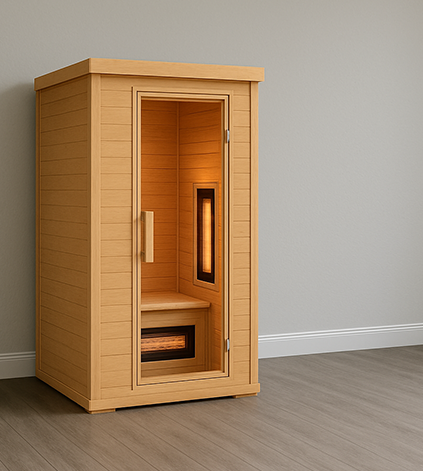
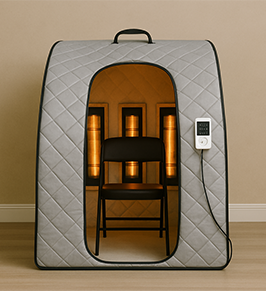
Near Infrared (NIR) Sauna
Near infrared units use incandescent or LED bulbs that emit shorter wavelengths of light. NIR penetrates just a few millimeters into the skin. Advocates claim skin-level benefits, but the shallow penetration means deeper circulation and detox effects are limited compared to far infrared. Some detractor sites promote NIR heavily while casting doubt on far infrared, but clinical studies generally favor far infrared for whole-body therapy.
Full Spectrum Sauna
A newer category is the “full spectrum” sauna, which combines near, mid, and far infrared heaters in one cabin. In practice, these often distribute heat unevenly. Because far infrared already provides the deepest penetration and the most studied benefits, “full spectrum” is sometimes more of a marketing term than a functional upgrade. Buyers should be wary of paying extra for claims that sound impressive but add little practical value.
Far Infrared (FIR) Sauna
Far infrared saunas work differently. Instead of heating the air first, FIR wavelengths penetrate into the body, raising core temperature more efficiently. The experience feels gentler — ambient air may only reach 120–140°F — but the deep, internal warmth produces a strong sweat and measurable effects on circulation, relaxation, and detox support. Portable FIR saunas, such as Relax Sauna, have gained popularity because they concentrate this spectrum with precision. Some bloggers claim portability means lower effectiveness, but consistent user reports and professional endorsements show otherwise.
By understanding these categories, you can cut through marketing hype and avoid being misled by oversimplified claims like “all infrared is the same.” Each type of sauna has its place — but if your goal is deep therapeutic heating with proven wellness benefits, far infrared deserves serious consideration.
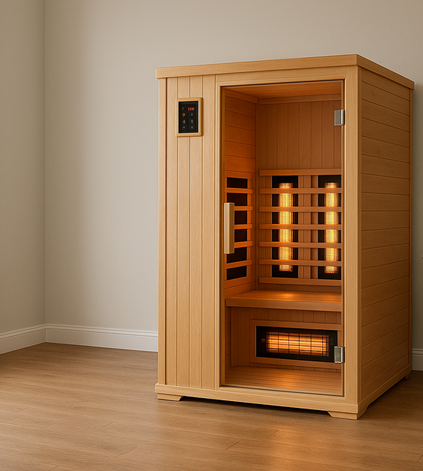
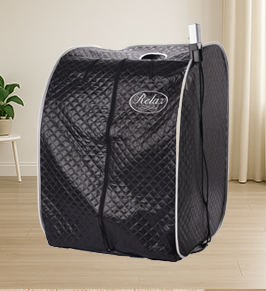
Look for Key Sauna Features
Once you know the types, the next step is learning which features actually matter. Detractor blogs often exaggerate concerns or dismiss important factors, leaving buyers confused. Here are the criteria that truly define quality:
Heat Spectrum & Delivery
Far infrared therapy is only effective if the sauna produces a high concentration of FIR wavelengths. Some inexpensive imports use generic heaters that scatter energy broadly. Precision-engineered units — like Relax Sauna’s semiconductor technology — produce a targeted FIR output, which explains why users report stronger results despite smaller cabin size.
EMF Levels
Electromagnetic fields are a common concern. Critics sometimes use scare tactics, suggesting all infrared saunas “blast” EMFs. In reality, well-designed saunas measure extremely low EMF at the user’s seat. Independent testing shows Relax Sauna at levels lower than everyday household appliances, while many cheap units on Amazon test far higher.
Build Quality & Portability
Wooden cabin saunas look impressive but require permanent installation and significant space. Portable models offer flexibility: they can be set up in a bedroom, living room, or office in minutes. Skeptics may dismiss portability as a gimmick, but for people with small homes or those who want quick access without remodeling, portability is a real advantage — not a compromise.
Warranty & Support
Another overlooked factor is customer support. Saunas are an investment, and a warranty backed by a responsive company is worth more than a long list of marketing claims. Cheap imports frequently lack this safety net. Relax Sauna, on the other hand, offers robust after-sale support and is accessible in the U.S. — something buyers often only discover after a bad experience elsewhere.
By focusing on these features, buyers can separate thoughtful engineering from copycat products. It’s not about hype — it’s about measurable differences that affect both safety and results.
Smart Sauna Comparisons
When shopping, it’s tempting to think the decision boils down to price or size. Unfortunately, this is where many buyers make mistakes — and where detractor blogs often mislead readers by painting all products as interchangeable. Smart comparisons look deeper.
Price vs Value
A $200 portable sauna online may sound appealing, but if it breaks within months or delivers weak heat, it’s not a bargain. On the other end, a $6,000 wooden cabin might look luxurious, but if your real goal is therapeutic far infrared, the extra cost doesn’t necessarily equal better results. Value comes from efficiency, safety, and durability — not from extremes on either end.
Performance in Use
One misleading claim repeated online is that “more sweat means better detox.” In reality, the quality of heat penetration matters more than visible sweat volume. Relax Sauna’s targeted FIR can produce a deep sweat quickly, even in short 15–20 minute sessions, while cheaper units may run longer without achieving the same effect.
Long-Term Reliability
Wooden saunas may crack, warp, or require professional installation. Low-cost imports may simply stop working. By contrast, well-engineered FIR saunas with semiconductor heaters often last years with minimal upkeep. When comparing, it’s worth considering not just the first month, but the next decade of ownership.
Smart comparisons aren’t about picking the cheapest or the flashiest. They’re about weighing spectrum accuracy, safety, ease of use, and longevity against the upfront cost. When you take this broader view, the differences become clear — and misleading negative reviews lose much of their weight.
Putting It All Together, Sauna Buyers Guide
When you look beyond marketing claims and focus on real features, the differences between sauna types become clear. Traditional Finnish saunas offer ritual and heat, steam rooms provide humidity, and cheaper infrared imports may give a mild experience. But for buyers who want efficient heating that supports circulation, detox, and — most importantly — relief from chronic aches and pains, far infrared stands apart.
That’s why this guide emphasizes not just price or appearance, but performance, safety, and long-term reliability. A sauna isn’t just a box that makes you sweat — it’s a wellness tool that should leave you feeling looser, calmer, and more comfortable in your body. Many Relax Sauna owners report noticeable reductions in stiffness, muscle soreness, and joint pain after just 15–20 minutes of use, which is something lower-grade units struggle to deliver.
To help you see these differences at a glance, we’ve assembled a comparison chart that lays out how Relax Sauna stacks up against traditional wooden infrared saunas and low-cost portable imports. Use it to cut through the noise, spot the features that matter most, and decide which sauna truly fits your needs.
Sauna Buyer’s Comparison Guide
Quick Chart
Relax Far Infrared Sauna
- Mid-range cost, high performance
- 95–100% true far infrared output
- Sets up in 2 minutes, no tools
- Lightweight, folds for travel or storage
- Roomy interior, breathable fabric, adjustable chair
- 1–3 year warranty, long lifespan
- Overall: High value & convenience
Traditional Wooden Infrared Sauna
- High cost, variable results
- Mixed infrared ranges, less efficient
- Requires permanent space & installation
- Not portable, fixed in place
- Spacious, but longer warm-up times
- Variable warranties, possible costly repairs
- Overall: Medium value, high cost
Generic Portable Sauna
- Low cost, inconsistent results
- Often weak or uneven heat
- Quick setup, but wears out fast
- Portable, but often flimsy
- Small, cramped, zipper enclosures
- Short warranty, limited durability
- Overall: Budget-friendly but low reliability
Bottom Line: If you’re looking for powerful far infrared therapy, portability, and value, the Relax Sauna consistently stands out. Traditional wooden saunas may look nice, but they’re costly and less efficient. Generic portable saunas are cheap upfront, but often fail to deliver lasting results.


Frequently Asked Questions
Far infrared saunas are widely considered the best for pain relief. Unlike traditional Finnish saunas or steam rooms that heat the air, far infrared penetrates the body more deeply, improving circulation, reducing inflammation, and easing sore muscles and joints.
Traditional Finnish saunas create high-heat environments (160–200°F) that encourage sweating through hot air, while far infrared saunas use radiant wavelengths to warm the body directly. FIR feels gentler, works at lower air temperatures, and is especially effective for relaxation, circulation, and pain relief.
Well-designed portable far infrared saunas can be just as effective as larger wooden cabins. Models like Relax Sauna use precision-engineered generators to deliver concentrated far infrared energy, producing deep warmth and consistent pain relief without the need for permanent installation.
